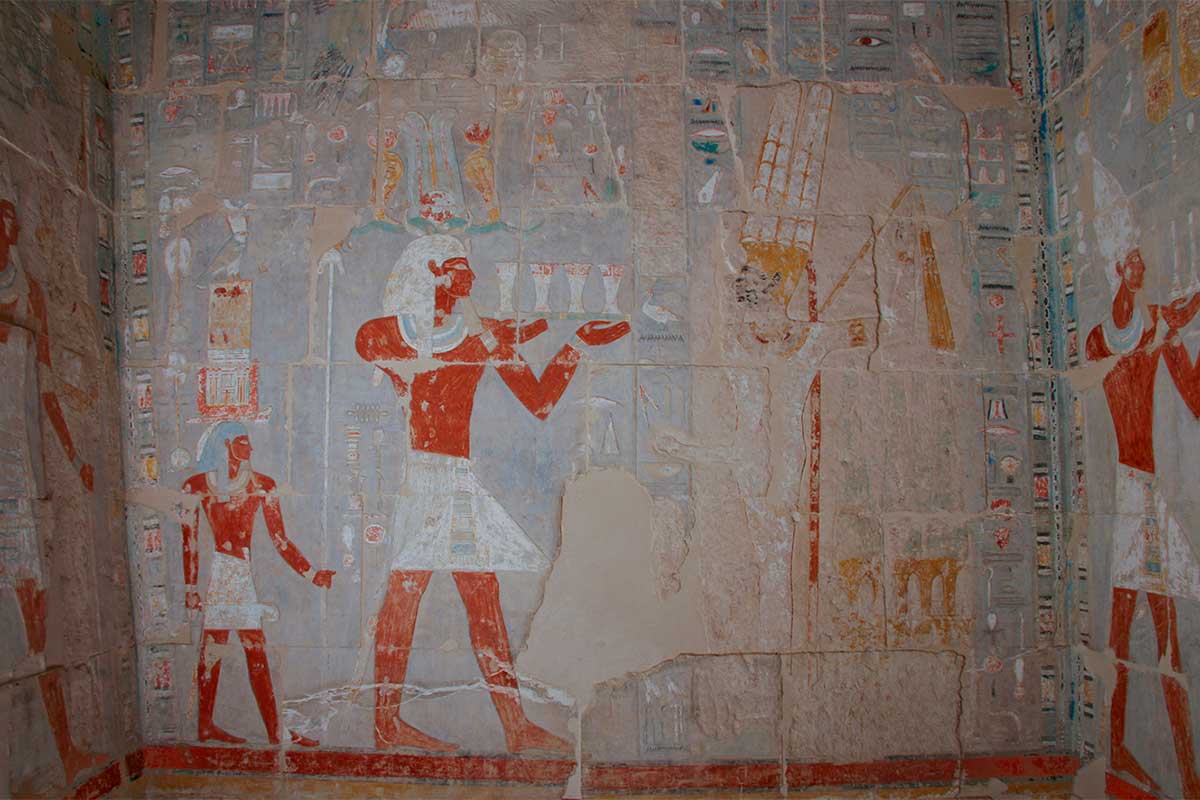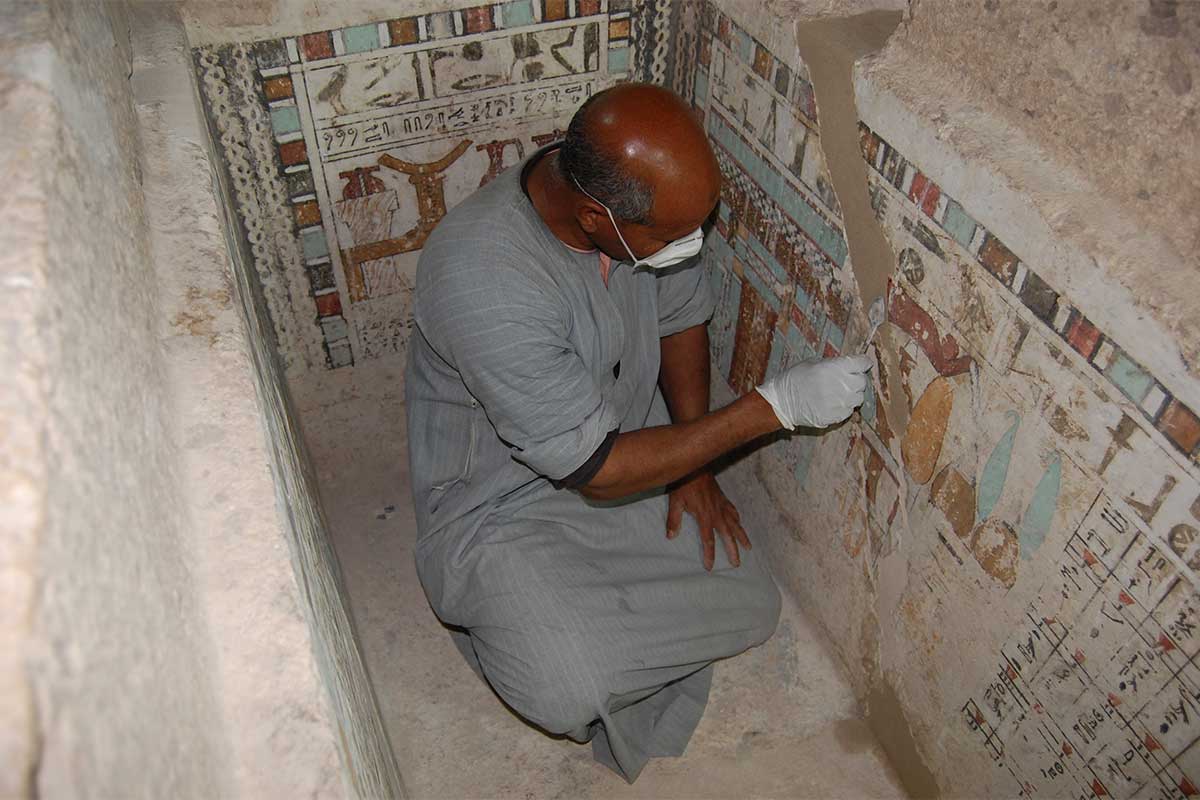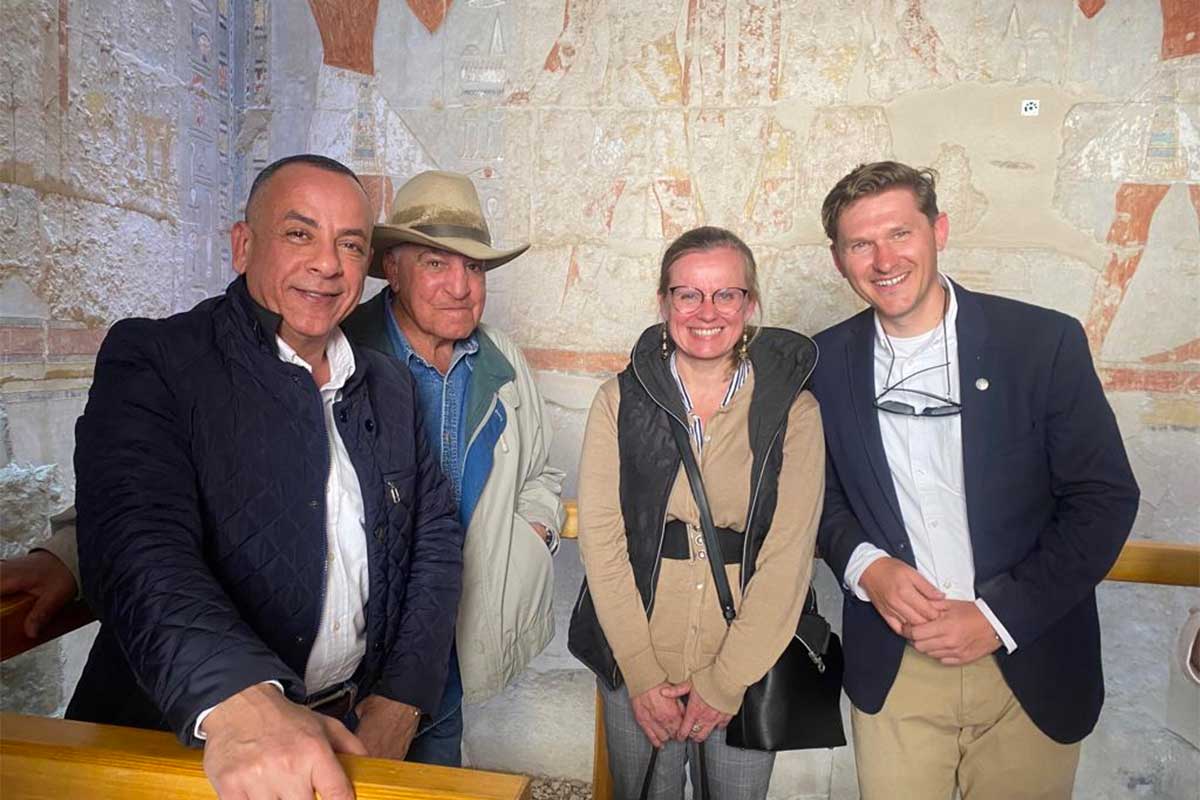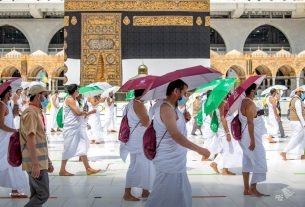Fri 10 February 2023:
Egypt has restored, documented and opened to tourists the Middle Kingdom tomb of Meru, the oldest site accessible to the public on Luxor’s West Bank, home to some of its most spectacular Pharaonic monuments, including the Valley of the Kings, Reuters reports.
Meru was a high-ranking official at the court of the 11th Dynasty King, Mentuhotep II, who reigned until 2004 BC and who, like Meru, was buried at the necropolis of North Asasif, the Ministry said in a statement on Thursday.




Meru’s rock-hewn tomb was restored by the Polish Centre for Mediterranean Archaeology at the University of Warsaw and Egypt’s Supreme Council of Antiquities.
Renowned Egyptologist Zahi Hawass, Fathi Yassin, director-general of antiquities in Upper Egypt, and Patrick Zuwidksy, head of the Polish-Egyptian archaeological mission attended the opening ceremony.
“This is the first site from such an early period in Western Thebes to be made accessible to visitors,” the Ministry statement quoted Fathi Yassin, General Director of Antiquities in Upper Egypt, as saying.
The tomb, which faced the procession avenue to Mentuhotep II’s temple, contains a corridor leading to an offering chapel with a niche for a statue of the deceased. A burial shaft descends to a burial chamber with a sarcophagus.
“This is the only decorated room of the tomb, with an unusual decoration of painting on lime plaster,” Yassin said.
“The restoration was carried out by conservators, architects, structural engineers, and Egyptologists from the Polish-Egyptian archaeological and conservation expedition from the PCMA UW and Secretary-General of the Supreme Council of Antiquities (SCA) Mostafa Waziri.”
As indicated by the themes of the restored wall decorations, the southern room was probably used to store aromatic substances and linen robes used during rituals. The walls of the northern room, of unknown function, depict the offering of sacrifices to Amun-Re by queen Hatshepsut and her ward, king Thutmose III, and some rituals they performed, such as running with an oar.
Meru’s tomb had been known since at least the mid-19th century, according to the Polish Egyptian archaeological mission. Italian conservators cleaned some of the wall paintings in 1996.
Some of the Middle Kingdom’s most prominent officials were buried at North Asasif, the statement said.
___________________________________________________________________________________________________________________________________
FOLLOW INDEPENDENT PRESS:
TWITTER (CLICK HERE)
https://twitter.com/IpIndependent
FACEBOOK (CLICK HERE)
https://web.facebook.com/ipindependent
Think your friends would be interested? Share this story!





